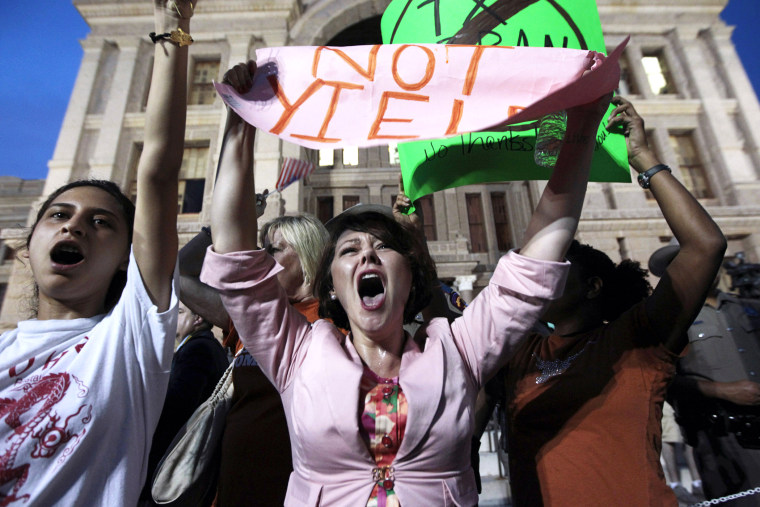Keeping track of state restrictions on reproductive rights can feel like capturing a downpour in a paper cup. It's quantifiable that the cup is overflowing: according to the Guttmacher institute, the last three years saw more anti-abortion laws than the previous decade.
Two new reports from NARAL Pro-Choice America and the Center for Reproductive Rights present another effort to get a handle on 2013 in reproductive rights -- or lack thereof.
As states become more politically polarized, so do abortion laws. There are 21 states where abortion opponents control the entire legislature and the governor's mansion. There are only seven states that are similarly controlled by pro-choice politicians.
That political math makes NARAL's ranking of the states more dramatic. The best state for the exercise of reproductive rights is, perhaps unsurprisingly, California; the contenders for the worst are manifold. (It's North Dakota, though Mississippi edges right up to it.)
States got better grades if they expanded access to contraception, comprehensive sex education, and abortion, and California actually enacted four such laws in 2013. At the other end of the spectrum, Arkansas enacted 8 anti-abortion laws, aided by the fact that its legislature was all-red for the first time since Reconstruction, with a majority strong enough to override the Democratic governor's veto.
Such laws ran the gamut, from banning abortion after a particular point in pregnancy, to insurance bans both public and private, to forced transvaginal ultrasounds, to the expansion of crisis pregnancy centers that often mislead women. States got innovative, or bulked up existing laws: In South Dakota, for example, a mandatory delay of 72 hours before having an abortion was amended to make only business days count towards that delay.
The Center for Reproductive Rights, which represents many abortion providers in their challenges of these laws, focuses particularly on so-called TRAP laws, or targeted regulations of abortion providers. "These types of laws make the delivery of health care services prohibitively expensive and place unnecessary restrictions on the qualifications of providers who perform abortions, in an attempt to prevent them from being able to provide abortion care," according to the report, which notes that seven states passed such laws in 2013. The most high-profile one was the one Wendy Davis attempted to block in Texas; it is now being challenged in the federal court system and expected to head to the Supreme Court.
"There are four states with only one abortion provider," notes the CRR report. "For those states, in particular, where access is most limited, TRAP regulations can serve as a backdoor ban on abortion." In 2014, the fate of the last clinic in Mississippi -- also tied up in court, pending word on whether an admitting privileges law that would shut it down is constitutional -- may be resolved.
Because, of course, another year beginning doesn't mean an end to any of this. As NARAL's president Ilyse Hogue writes, "The anti-choice War on Women did not slow down in 2013. You can be sure it will only ramp up further in 2014 as the mid-term elections approach."
